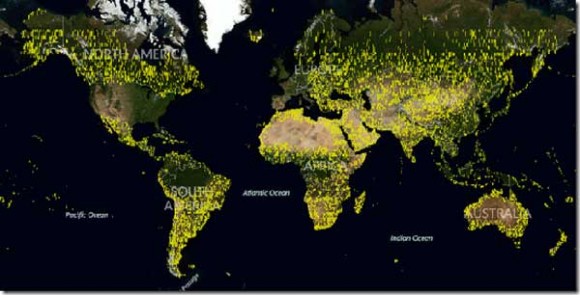Bing Maps Will Cover All The U.S. And Europe by the End of the Year

Following Apple and Google announcements of their new mapping efforts in the previous days, Microsoft has also decided to upgrade its mapping service. Microsoft’s Bing has just announced they will be throwing in 165 terabytes worth of new data that covers more than 1 million square miles. This is the largest satellite Microsoft mapping engine has ever released.
“This release features imagery over North America, South America, Africa, Australia, Europe and Asia,” Bing wrote in a blog post today. “The total area covered in this data release is nearly 38 million square kilometers.”
In addition, Bing Imagery Technologies group has successfully taken 100% of the U.S. aerial photography this month and the company is likely to hit the same 100% milestone for Europe this year. All of these images are expected to release at the end of this year.
As Microsoft notes, “a challenge for consumers and enterprise organizations using web mapping services has been that much of the imagery featured there has historically been a patchwork of satellite and aerial imagery of different vintage, quality, clarity and detail.”
Back in 2010, Microsoft introduced a “Global Ortho” program in which users are provided with 30 cm aerial blanket coverage across U.S. and Europe and also offer them reliable mapping experience. However, the company revealed today that it takes about 16,500 computer cores and almost 55 petabytes of storage to run Bing Imagery Technologies’ software that combines all of these images together and eventually makes them ready for publishing.
Apple and Google are presently working on 3D maps, but this is something Bing offered in the past with the help of its Virtual Earth 3D program. At the moment, Microsoft is not giving much attention on 3D and has been completely working on its bird’-eye and aerial imagery. The company is expecting to gain ground in the field of mapping service.







